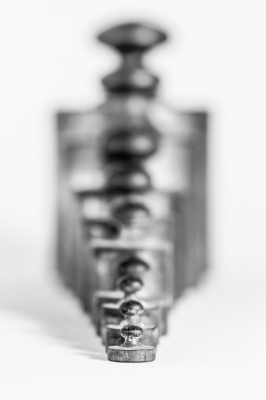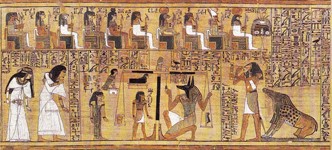A Weighty History

By Kerry Connell
One of the first experiences most of us ever had involved a piece of scientific equipment: the scale. When a baby is born, the third question is always the baby’s weight (after the sex and the name). Weighing babies— and nearly everything else—is an important part of human life.
Without a system of weights and measures, commerce would not be possible. As early as 4,000 B.C., our ancestors took a look at the yoke on their oxen and had the idea for the first balance. They used naturally occurring uniform items like seeds in order to determine an object’s weight. Manufactured weights came next. Often made of brass or porcelain, weights in ancient Egypt, India and Africa often took the shape of animals. The Romans were the first to standardize the pound. Because the balancing arms of Libra signify fairness and accuracy, libra was the Roman word for this weight—and so the Romans are responsible for the awkward modern abbreviation, “lb.”
As he did for so many other scientific developments, Leonardo da Vinci advanced the science of measurement by devising the first selfindicating scale. The Tudor and Elizabethan eras both saw great strides in the standardization of weights and measures, and, bit by bit, this growing uniformity and developing technology made scientific advancement possible.
Fast-forward several hundred years to Toledo, Ohio in 1873 and the birth of Allen DeVilbiss, an inventor whose keen interest in weight measurement gave us the first automatic computing pendulum scale (created to keep butchers honest).

In 1900, Henry Theobald saw the financial potential of this machine and started the Toledo Computing Scale and Cash Register Company (known far and wide for its tagline, “No Springs, Honest Weight”). And in Küsnacht, Switzerland, in 1945, Erhard Mettler invented the single-pan balance, based on the substitution principle. These analytical balances eventually replaced conventional two-pan balances in the laboratory. In 1989, the two companies came together as Mettler Toledo.
In 2015, we observe the 70th anniversary of the analytical balance. This revolutionary machine eventually led to many more precise instruments, like the Mettler PT1200 balance, launched in 1973. It’s difficult to imagine lab work without the nowstandard devices that spark inspiration, ensure accuracy and boost productivity. The color touchscreen, the SmartGrid weighing pan, automatic touchless technology, static detection and connectivity options all owe a debt of gratitude to Erhard Mettler and his single-pan balance.